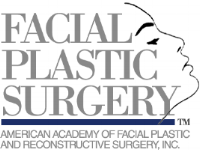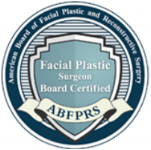Look Younger With Blepharoplasty!
Most patients seek a long-lasting solution to minimize eyelid wrinkles. At Westside Face, our team can recommend a range of invasive and non-invasive options that are sure to fit your needs. If you are specifically looking for eyelid treatments in Los Angeles, we perform a blepharoplasty. It is surgically conducted on eyelids that are drooping, sagging, or generally obscuring their field of vision. Eyelids tend to be the part of the face that first shows the signs of aging since the skin in that area is thinner than any other. Not only do drooping eyelids tend to make one appear older and more tired, they also can also impair your ability to see objects located within your peripheral vision.
Undergoing a blepharoplasty means the surgeon will tighten eyelid tissues and muscles while removing excess fat and skin. The procedure is safe and has been known to cause little to no side effects.
Blepharoplasty Candidates
Almost anyone is eligible for a blepharoplasty as long as you are generally healthy. However, it is probably best that you do not smoke, which causes eye creasing. You should also have basically healthy facial muscles and tissue, and not suffer from any extraneous eye conditions.
Blepharoplasty Types
A blepharoplasty can be either a cosmetic procedure or a functional one, depending on the reason why one would decide on getting it done. A functional blepharoplasty is done to remove any excess skin that may obscure one’s vision, and the procedure is usually medically necessary, and covered by most insurance companies.
The cosmetic blepharoplasty is different, however. It is done to either the lower or upper eyelid or both and it is performed to improve the eyelid’s appearance. Excess skin is typically removed from the lower lid or excess fat is redistributed to freshen the entire eye area and give you a youthful glow. It’s a subtle procedure, however, and it will not drastically change your face, which is good if you are only looking for a little pick-me-up.
Blepharoplasty Procedure
A blepharoplasty is safe and nearly free from complications. It is a 45 minute to 2 hour outpatient procedure that can be conducted under local anesthesia. The difference in time frame is solely dependent upon whether you choose to get both your lower and upper eyelids done at the same time.
With upper lids, the incisions are made along your lid’s natural creases and the fat deposits and excess skin are redistributed, removed, or both. The doctor may also tighten various tissues and the underlying muscles to give your lids a less droopy look. With your lower lids, the cut is made either on the inside of the lower lid or right under the lash line. Again, excess skin and fat is removed and sometimes redistributed.
Surgical tape, removable sutures, or skin adhesives are then used to close the incisions, which take a few days to heal properly.
Blepharoplasty Risks
As expected, bruising and swelling do occur after a blepharoplasty, but, in general, the procedure is well-tolerated and has few side effects. The swelling and bruising subsides naturally within a few days and is really normal and nothing to worry about.
There are a few rare complications that you should be aware of, such as anesthesia reactions, infection, double vision, granuloma, and blurred vision. The changes in tear distribution may also cause some temporary irritation and dry eyes. Scars are typically well-hidden and usually fade over time.
Blepharoplasty Recovery
Immediately following the surgery, lubricating ointment will be placed on your eyelids and it should be covered in sterile gauze. To alleviate swelling, you can apply cold compresses, as well. Other than that, recovery and healing is completely dependent on you as an individual. All people heal at different rates. If you have stitches, they should be removed on approximately the fourth day post-surgery.
Your doctor should provide you with instructions that will aid you in your recovery. He or she may prescribe pain medications that are either topical or should be taken orally. The doctor will also schedule a follow-up exam to ensure proper recovery is taking place. If, however, you are experiencing any alarming signs or symptoms, you should make a date to follow-up sooner than usual.
As with any microsurgery, especially in an area as delicate as the eyes, you should naturally expect some irritation, bruising, swelling, and dryness. Since most swelling should discontinue after two weeks, you should refrain from wearing contact lenses and eye makeup in the meantime. You should also invest in a good pair of dark sunglasses in that time period to keep your eyes from being exposed to the wind and sun, both of which can be too harsh at that point in your recovery.
Most blepharoplasty patients are able to return to work or school after a few days, but some may prefer to take a week off to heal. It is also recommended that you avoid any strenuous activities, such as exercise, within that same period, and possibly up to two weeks.
Our team at Westside Face are leading purveyors of brow surgery and all other plastic surgeries in Los Angeles. If you have any concerns, be sure to discuss them with us during your initial consultation, and bring up any ongoing issues when you attend your follow-up appointments.







